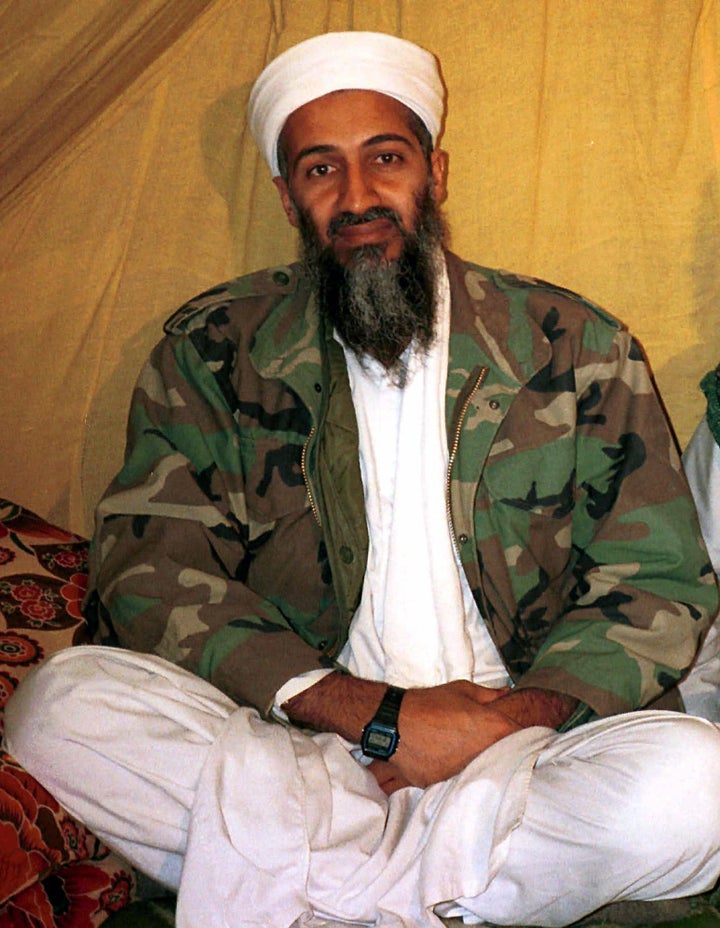
It was a secret more closely guarded than any other. They didn't tell their assistants, they didn't tell their spouses. They didn't tell the top U.S. military commander in Afghanistan until just three days before the strike.
And yet, as they debated whether or not Osama bin Laden was indeed hiding in a fortified compound in Pakistan -- and if so, what to do about it -- the CIA director longed for the layman's view. "What would the average American say if he or she knew what we were talking about?" Leon Panetta asked.
With the release of Peter Bergen's Manhunt: The Ten-Year Search for Bin Laden -- from 9/11 to Abbottabad, readers finally get their seat at the table, right next to the most powerful figures from the White House, CIA, Pentagon, and State Department.
This superbly researched account of the United States' decade-long effort to track and kill bin Laden provides the intimate details on virtually every critical decision along the way. Bergen, who produced the infamous al Qaeda leader's first television interview in 1997 and currently serves as CNN's national security analyst, takes a 'just the facts' approach, allowing the thrilling events, contentious debates, and passionate players to speak for themselves.
Perhaps more remarkably, given its comprehensive coverage of this defining era in American history, the book actually transcends its subject matter, demonstrating the best practices of critical thinking by the people who do it best.
At its core, the hunt for bin Laden was a mental competition -- a "solvable puzzle," as one analyst put it -- requiring U.S. experts to out-think their adversary, and thus find someone who did not want to be found, hiding far away in a foreign land.
Bergen tracks their genius, and readers can play along, imagining what they would have thought, said, or done -- every step of the way. For example, in 2005, a female analyst established the guiding theory for the search, arguing that there were four primary ways bin Laden could be found: through his couriers, his family, his fellow leaders, or his media pronouncements. Of course, it turned out that she was exactly right. Later, after the key courier was tracked back to the suspicious compound in Abbottabad, U.S. leaders still didn't know who was inside. Tall exterior walls shielded the windows and doors, and other barriers rendered satellite surveillance impossible. So they challenged analysts to come up with 25 possibilities for spying on the people inside, reminding them to "not be afraid of making some of them creative." The thinkers delivered 38.
Critically, Manhunt also reveals the pitfalls of intellectual arrogance. When smart people become too confident and self-congratulatory, when they surround themselves with 'yes-men' who engage in groupthink, the results can be disastrous.
It was this type of self-delusion that led bin Laden to strike the U.S. on 9/11. Accustomed to never being questioned, he insisted that the attacks would actually frighten American forces into pulling out of the Middle East. Of course, he was completely wrong -- the attacks had the opposite effect. And it appears he made similar cognitive errors years later, in his compound in Pakistan, where he wrongly assumed himself safe and made shockingly few preparations for defense or escape.
But this type of shortsightedness can be found on all sides. For instance, Bergen details the galling mistakes made by U.S. leaders in 2002, when they had bin Laden trapped in the Tora Bora mountains in Afghanistan but let him slip through their fingers. The commanders were far too confident that their current strategy was sound, far too myopic regarding the unguarded escape routes to Pakistan, and far too risk averse to authorize the 800 troops needed to finish the job.
As Bergen thus demonstrates, true genius requires more than just brainpower. It also demands perspective, balance, and the willingness to have one's own ideas challenged. This is what ultimately ensured the United States' success in taking down bin Laden. In a nation where "freedom of expression" is a protected legal right, far too few exercise it, fearful of their bosses' displeasure. But in the hunt for bin Laden, U.S. leaders grew to encourage disagreements and debate, recognizing that when the stakes are so high -- lives to be lost, careers to be crushed, reputations to be ruined -- all ideas must be challenged.
For instance, when CIA analysts determined that the mysterious man in Abbottabad was most likely bin Laden, they were ordered to go back, start from the beginning, and now attempt to argue the opposite. They were challenged to find every hole in their own logic, every weakness in their own evidence, every alternative explanation that seemed feasible. Analysts were even brought in from other agencies to conduct their own "red team" assessments, providing a further challenge to internal assumptions. This is how the best and brightest do their work, and in Manhunt, it is staggering to behold.
Throughout the book, Bergen adheres to these lessons, presenting the evidence on both sides of even the most controversial issues, without agenda or bias. Should former Presidents Bill Clinton and George W. Bush bear more blame for failing to kill bin Laden when they had the chance? How much credit does President Barack Obama deserve for the decisions he made? And were abusive interrogations necessary for extracting the clues to find bin Laden?
With the facts now at their fingertips in this compelling and authoritative book, it's time for readers to decide for themselves.